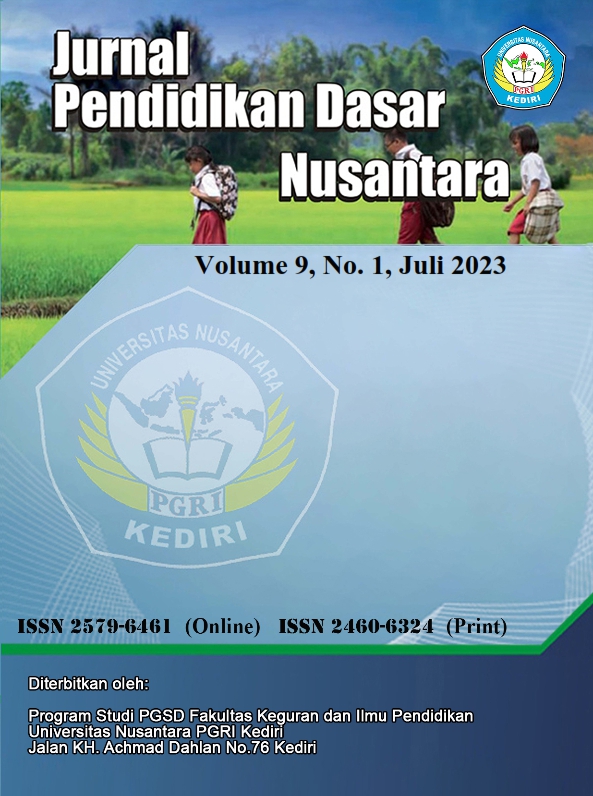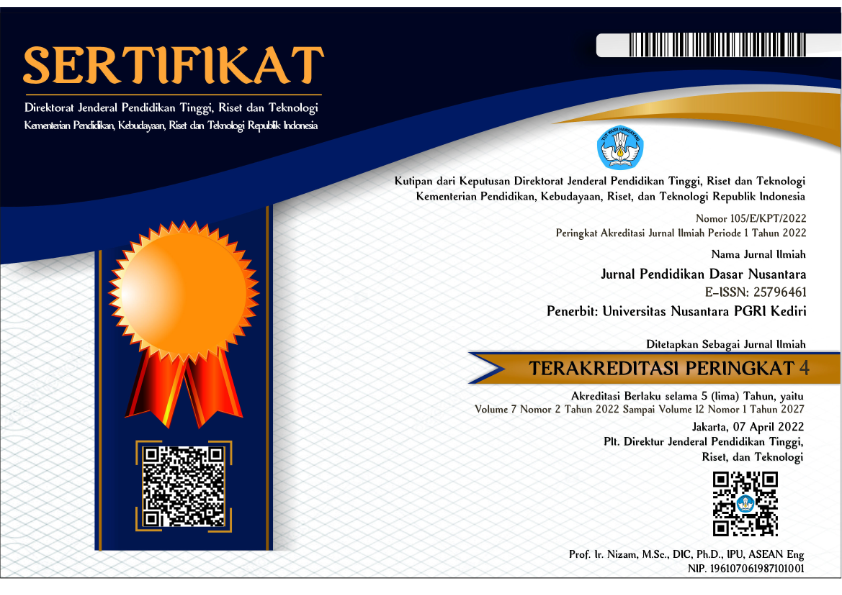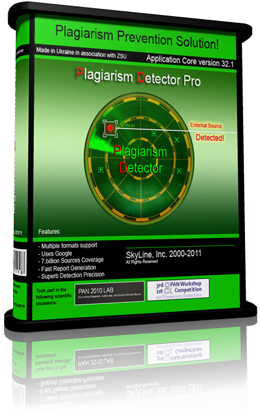Development of interactive powerpoint learning media based on information and communication technologies to improve student learning outcomes
DOI:
https://doi.org/10.29407/jpdn.v9i1.20056Keywords:
ICT-Based Learning Media, Interactive Powerpoint, Learning OutcomesAbstract
Research conducted by researchers on the development of interactive PowerPoint learning media based on Information And Communication Technologies is based on conceptual and theoretical understanding using thematic learning that is felt to be not fully understood by students, this has resulted in decreased student learning outcomes. To solve problems in the learning process, learning media is needed. The purpose of this research is to implement the development of interactive PowerPoint media using ICT for fifth-grade students of SDN 1 Gamping. This media was developed in the form of several slides which are equipped with buttons that are inserted by hyperlinks in the learning menu so that it will make it easier for the user to go to the slide after the specified slide. This study used the ADDIE research model as a development model. The research findings showed an average material validity score of 80% (appropriate), an average language validity score of 92% (very feasible), and an average media validity score of 88% (very feasible). Calculation of media effectiveness based on n-gain obtained a score of 0.59 in the medium category. Responses to ICT-based interactive PowerPoint learning media were obtained from small-scale tests with an average score of 80% while field-scale tests obtained an average value of 86%, overall Student responses related to media can be said to be positive. So that the analysis data obtained states that ICT-based interactive PowerPoint learning media is effective in improving student learning outcomes.
Downloads
References
Adiko, H. S. S. (2019). Penggunaan Media Pembelajaran Berbasis Ict (Information Communications Technologies) Dalam Meningkatkan Motivasi Belajar Peserta Didik. Akademika : Jurnal Ilmiah Media Publikasi Ilmu Pengetahuan dan Teknologi, 7(2), 67.
Buri. (2019). Thematic Learning Model in Madrasah Ibtidaiyah. Jurnal Pedagogik, 06(01), 221–251.
Fitria, A. (2018). Penggunaan Media Audio Visual Dalam Pembelajaran Anak Usia Dini. Cakrawala Dini: Jurnal Pendidikan Anak Usia Dini, 5(2), 57–62.
Gabriela, N. D. P. (2021). Pengaruh Media Pembelajaran Berbasi Audio Visual Terhadap Peningkatan Hasil Belajar Sekolah Dasar. Mahaguru: Jurnal Pendidikan Guru Sekolah Dasar , 2(1), 104–113.
Gandasari, M. F. (2019). Pengembangan model pembelajaran tematik pendidikan jasmani olahraga dan kesehatan untuk sekolah dasar. Jurnal Pendidikan Jasmani Indonesia, 15(1), 22–27.
Hidayat, F., & Nizar, M. (2021). Model Addie (Analysis, Design, Development, Implementation and Evaluation) Dalam Pembelajaran Pendidikan Agama Islam. Jurnal Inovasi Pendidikan Agama Islam (JIPAI), 1(1), 28–38.
Innayah, R. (2020). Pengaruh Media Pembelajaran Online, Motivasi Belajar, Dan Kompetensi Dosen Terhadap Kualitas Pembelajaran. PROMOSI (Jurnal Pendidikan Ekonomi), 8(2), 14. Retrieved from https://all3dp.com/2/fused-deposition-modeling-fdm-3d-printing-simply-explained/
Launin, S., Nugroho, W., & Setiawan, A. (2022). Pengaruh Media Game Online Wordwall Untuk Meningkatkan Minat Belajar Siswa Kelas IV. JUPEIS: Jurnal Pendidikan dan Ilmu Sosial, 1(3), 216-223.
Liu, Z., Kong, X., Liu, S., & Yang, Z. (2023). Effects of computer-based mind mapping on students’ reflection, cognitive presence, and learning outcomes in an online course. Distance Education, 1–19. doi.org/10.1080/01587919.2023.2226615.
Junaedi, I. (2019). Proses pembelajaran yang efektif. Journal of Information System, Applied, Management, Accounting and Research, 3(2), 19–25.
Magdalena, I., Fatakhatus Shodikoh, A., Pebrianti, A. R., Jannah, A. W., Susilawati, I., & Tangerang, U. M. (2021). Pentingnya Media Pembelajaran Untuk Meningkatkan Minat Belajar Siswa Sdn Meruya Selatan 06 Pagi. EDISI : Jurnal Edukasi dan Sains, 3(2), 312–325. Retrieved from https://ejournal.stitpn.ac.id/index.php/edisi.
Moto, M. M. (2019). Pengaruh Penggunaan Media Pembelajaran dalam Dunia Pendidikan. Indonesian Journal of Primary Education, 3(1), 20–28.
Muhammad, S. I. (2021). Pengembangan Media Pembelajaran Powerpoint Interaktif untuk Keterampilan Menyimak Cerita Fiksi kelas IV Sekolah Dasar Universitas Pendidikan Indonesia. Skripsi Universitas Pendidikan Indonesia.
Nugroho, W. (2021). Pengaruh Media Lingkungan Sekolah Berbasis Adiwiyata Terhadap Hasil Belajar Siswa kelas III Sekolah Dasar. Honoli Journal of Primary Teacher Education, 1(2), 39–48., 1(April), 1-39–48. Retrieved from https://ojs3.unpatti.ac.id/index.php/honoli/article/view/5759.
Nurfaizah, S., & Oktavia, P. (2020). Proses Pembelajaran Siswa Sekolah Dasar di MI Nurul Hikmah. As-Sabiqun, 2(1), 43–48.
Rawung, W. H., Katuuk, D. A., Rotty, V. N. J., & Lengkong, J. S. J. (2021). Kurikulum dan Tantangannya pada Abad 21. Jurnal Bahana Manajemen Pendidikan, 10(1), 29.
Rifa H. M., Sekar Nurul Fajriyah A., Febyana Chitta, & Muhamad R. Zulfikar. (2021). Pentingnya Keterampilan Belajar di Abad 21 sebagai Tuntutan dalam Pengembangan Sumber Daya Manusia. Lectura : Jurnal Pendidikan, 12(1), 29–40.
Setiawan, A. (2021). Efektivitas Penggunaan Model Pembelajaran Probing-Prompting Terhadap Hasil Belajar Siswa Tema Lingkungan Sahabat Kita di Kelas V Sekolah Dasar. Jurnal Pendidikan Dasar Nusantara, 7(1), 1–16.
Sugiyono. (2016). Metode Penelitian Kuantitatif, Kualitatif, dan R&D. Bandung: Alfabeta.
Wityastuti, E. Z., Masrofah, S., Haqqi, T. A. F., & Salsabila, U. H. (2022). Implementasi Penggunaan Media Pembelajaran Digital di Masa Pandemi COVID-19. Jurnal Penelitian Inovatif, 2(1), 39–46.
Wulandari, E. (2022). Pemanfaatan Powerpoint Interaktif Sebagai Media Pembelajaran Dalam Hybrid Learning. JUPEIS : Jurnal Pendidikan dan Ilmu Sosial, 1(2), 26–32.
Downloads
Published
Issue
Section
License
Authors who publish with this journal agree to the following terms:
- Copyright on any article is retained by the author(s).
- The author grants the journal, the right of first publication with the work simultaneously licensed under a Creative Commons Attribution License that allows others to share the work with an acknowledgment of the work’s authorship and initial publication in this journal.
- Authors are able to enter into separate, additional contractual arrangements for the non-exclusive distribution of the journal’s published version of the work (e.g., post it to an institutional repository or publish it in a book), with an acknowledgment of its initial publication in this journal.
- Authors are permitted and encouraged to post their work online (e.g., in institutional repositories or on their website) prior to and during the submission process, as it can lead to productive exchanges, as well as earlier and greater citation of published work.
- The article and any associated published material is distributed under the Creative Commons Attribution-ShareAlike 4.0 International License

































